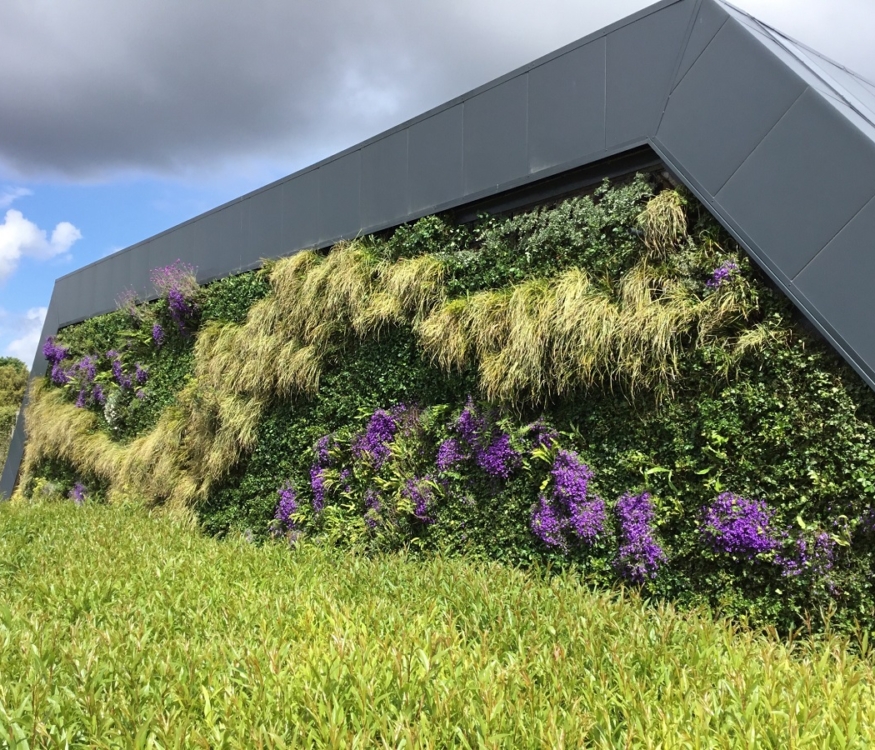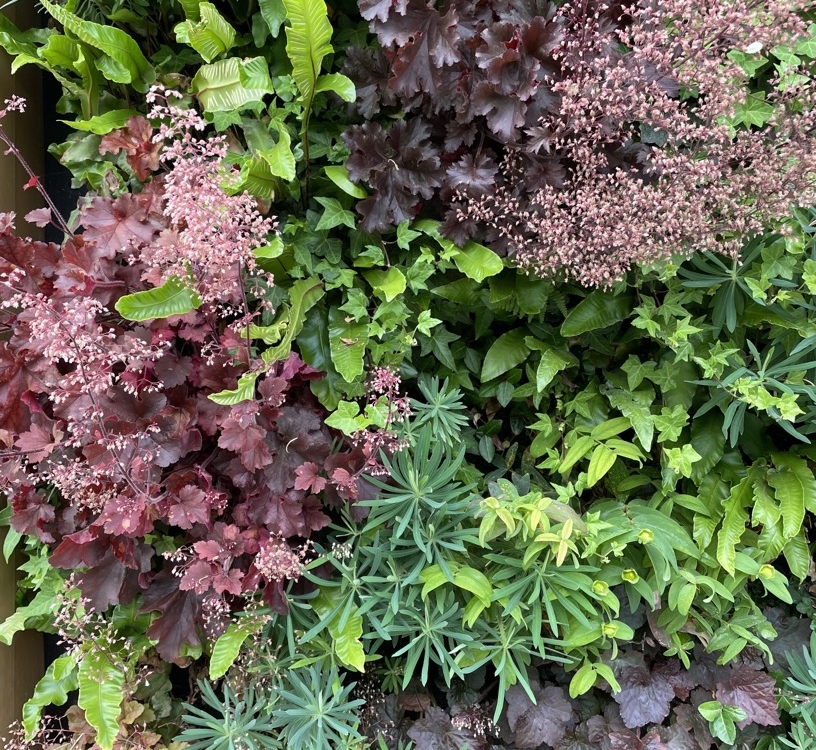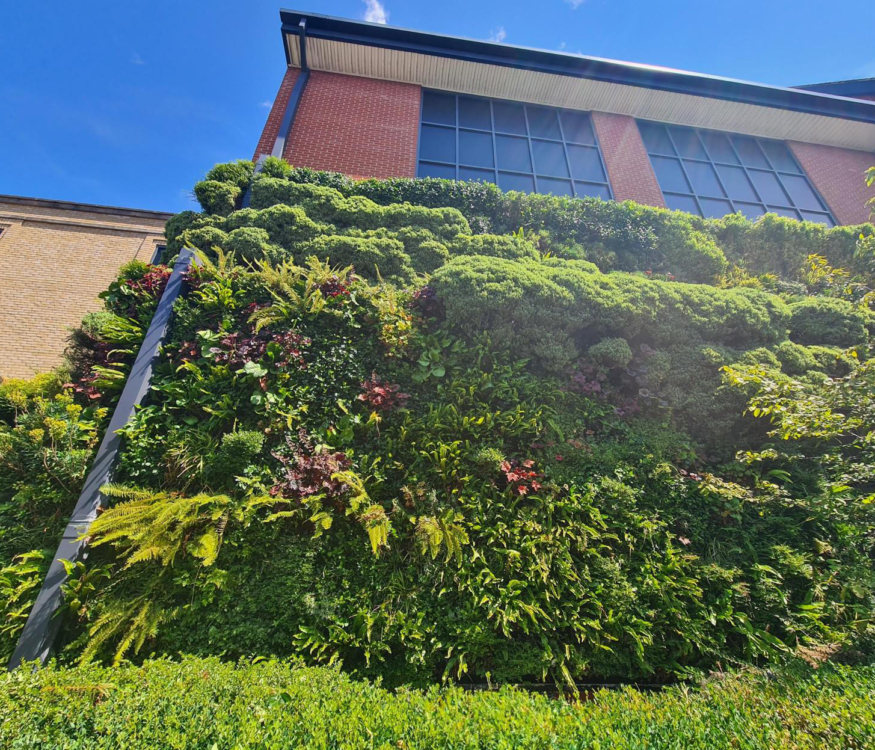The connection between our mental health and nature
Our intrinsic connection with nature is often lost or forgotten, particularly during the working week. Here at Biotecture, our living walls work hard every day to help restore this connection to workplaces all over the world. Living walls (also known as green walls) deliver a sense of peace, reduce stress and improve our mental health, and employers now are recognising the benefits a living wall brings to its employees in terms of physical and mental health and wellbeing.
But what do we actually mean by ‘mental health’?
We all have mental health, just as we have physical health. Both can be impaired if we don’t look after them. Our heart, lungs and liver can be damaged if we don’t exercise, or we smoke, overeat, or drink too much alcohol, and our ability to cope with all the demands life throws at may also be impaired if we don’t take care of our mental health and wellbeing.
When our physical health is good, we feel energized, flexible and able to participate in all that life has to offer, and when our mental health is good, we feel emotionally well, able to look after ourselves and able to engage with the things that we care about. When we struggle with our mental health, we can feel overwhelmed and unable to cope, which can make it difficult to manage in our daily lives.
What do studies say?
In 2018, the Mental Health Foundation found that 74% of people have at some point felt so overwhelmed, they felt unable to cope. For most people, these feelings of overwhelm may ebb and flow, but for others they may be longer lasting which can be a long term problem both individually, and for businesses. This is why it’s important to pay as much attention to your mental wellbeing as you do to your physical health.
So how do we look after our mental health?
You don’t have to have a grand plan: there are small things that each of us can do in our day-to-day lives that can help to support good mental health, including connecting to nature.
Many of us live a fast-paced urban life, with long working days and long, crowded commutes and busy lives. In these environments there are many pressures that affect our mental health. During the working day, it can be hard to find the time to disconnect from deadlines and give yourself some mental breathing space, but this is so very important to avoid burning out, losing focus and becoming mentally overloaded.
How does nature help with employee mental health?
One way that Biotecture has been helping to make this possible in the workplace, is the installation of green living walls both indoors and outdoors.
By creating these green oases, key studies indicate that a green working environment is consistently more enjoyable for employees.[1]
Nature restores mental functioning in the same way that food and water restore bodies. The business of everyday life — dodging traffic, making decisions and judgment calls, interacting with strangers, answering emails — is depleting, and what man-made environments take away from us, nature gives back.
This understanding of the benefits of nature for our mental health is based in what is known as ‘Attention Restoration Theory’ (ART). According to ART, urban environments are draining because they force us to direct our attention to specific tasks and grab our attention dynamically, compelling us to “look here!” before telling us to instead “look over there!”.
But these continuously exhausting demands are absent in natural environments. Nature really requires very little from us, even though it is in a constant state of flux. The difference between natural and urban landscapes is how they command our attention: while man-made landscapes bombard us with stimulation, their natural counterparts give us the opportunity to replenish our depleted mental resources.[2]
The research
Research has shown that 94% of staff view their working environment as a reflection of how they are valued as employees but only 39% feel that their working environment has been designed with them in mind. Factors such as natural light, good ventilation and greenery appear to be the most important factors for workplace satisfaction in office design.
Studies also suggest that provision of a nature-enriched working environment leads to significant reductions in stress and anxiety for employees in the workplace, when surrounded by plants. 37% of those asked, reported a drop in tension and anxiety; there was a 58% reduction in depression and dejection, as well as a 38% fall in fatigue. There is a wealth of scientific evidence to back up the long-standing theory that plants are one of the many keys to mental wellbeing[3].
At Biotecture we can help you to create beautiful, effective and long lasting internal and external planting in a dynamic living wall system that will connect you with nature, every day.
For more on how we integrate internal living walls into the workspace, that are both relaxing and restorative, and where staff want to be, take a look at our blog on ‘Biophilic Design’ and to learn more about our living wall projects please visit our portfolio.
[1] Data from the findings of the study The Relative Benefit of Green Versus Lean Office Space: Three Field Experiments Nieuwenhuis, Knight, Postmes, Haslam as published in the Journal of Experimental Psychology 2014
[2] From an Article in the Atlantic in 2013 entitled How Nature Resets Our Minds and Bodies
[3] Results from a 2010 study by University of Technology in Sydney




